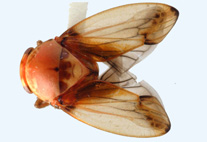Abstract
The Linxia Basin, Gansu Province, China, is known for its abundant and well preserved fossils. Here a new species, Euprox grandis sp. nov., is established based on a skull and antlers collected from the upper Miocene Liushu Formation of the Linxia Basin. The new species is distinguishable from other Euprox species by its large body size, notably long pedicle and weak burr. The main beam and the brow tine are slightly curved both medially and backwards, and the apex of the main beam turns, curving slightly laterally. The upper cheek teeth are brachydont, with a clear central fold on the premolars and internal postprotocrista and metaconule fold on M1-M2. The cingulum is almost absent, only occasionally weakly developed at the anterior and lingual surface of the teeth. Cladistic analysis was carried out using the TNT software, and two most parsimonious trees were retained. As the strict consensus tree shows E. grandis appears to be an advanced muntiacine form, which may have a close relationship with the genus Muntiacus. The presence of E. grandis in the Linxia Basin adds new evidence to support a warm and humid environment during the late Miocene in the basin.

